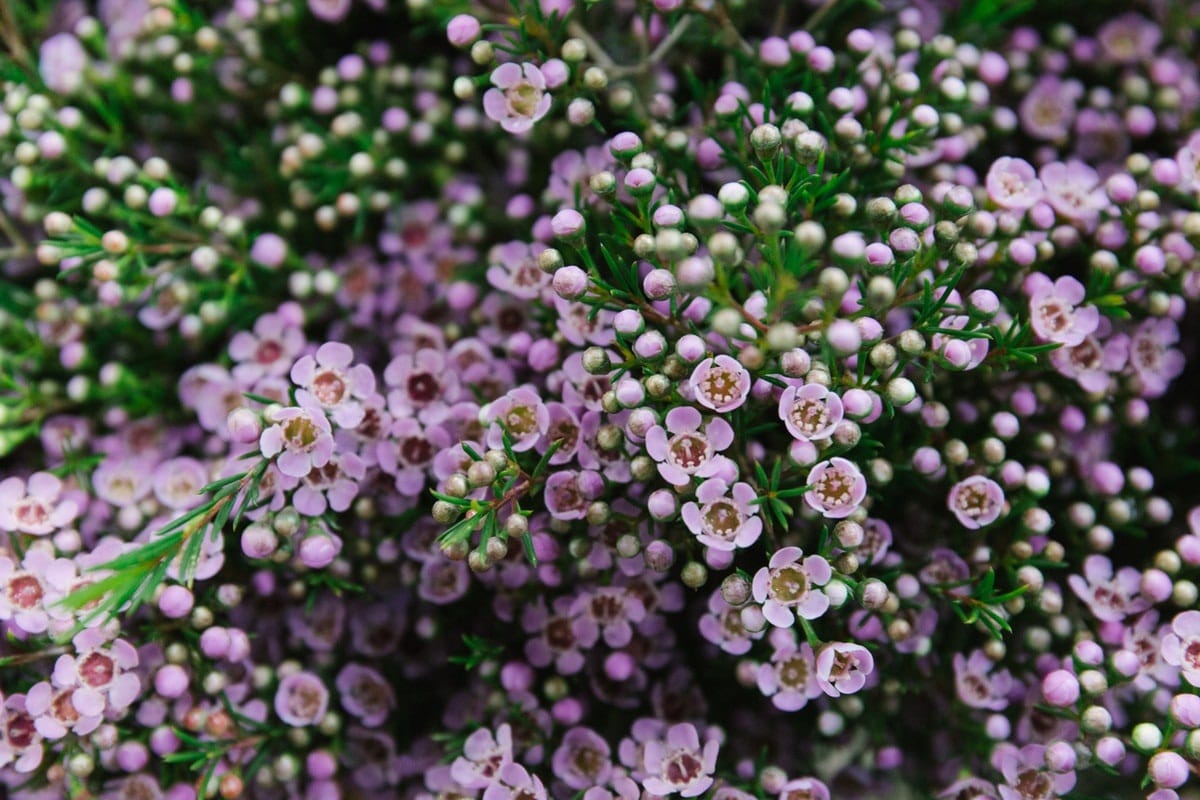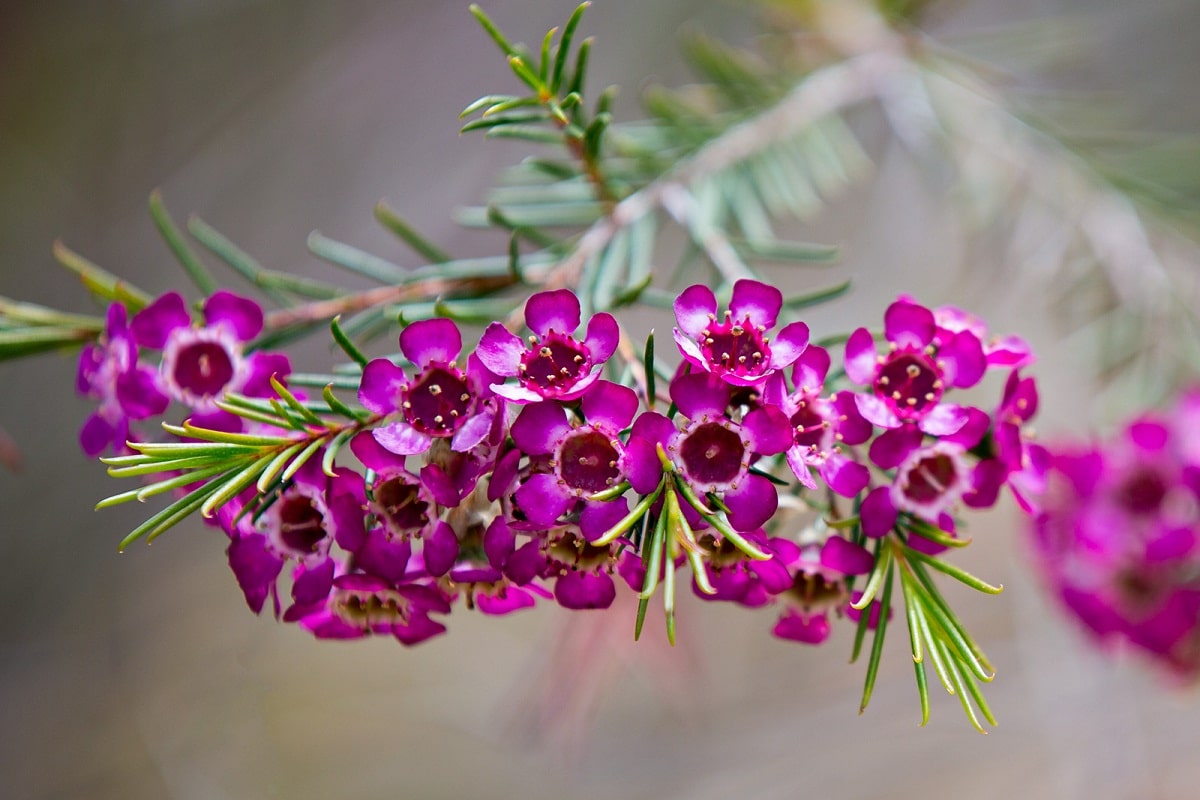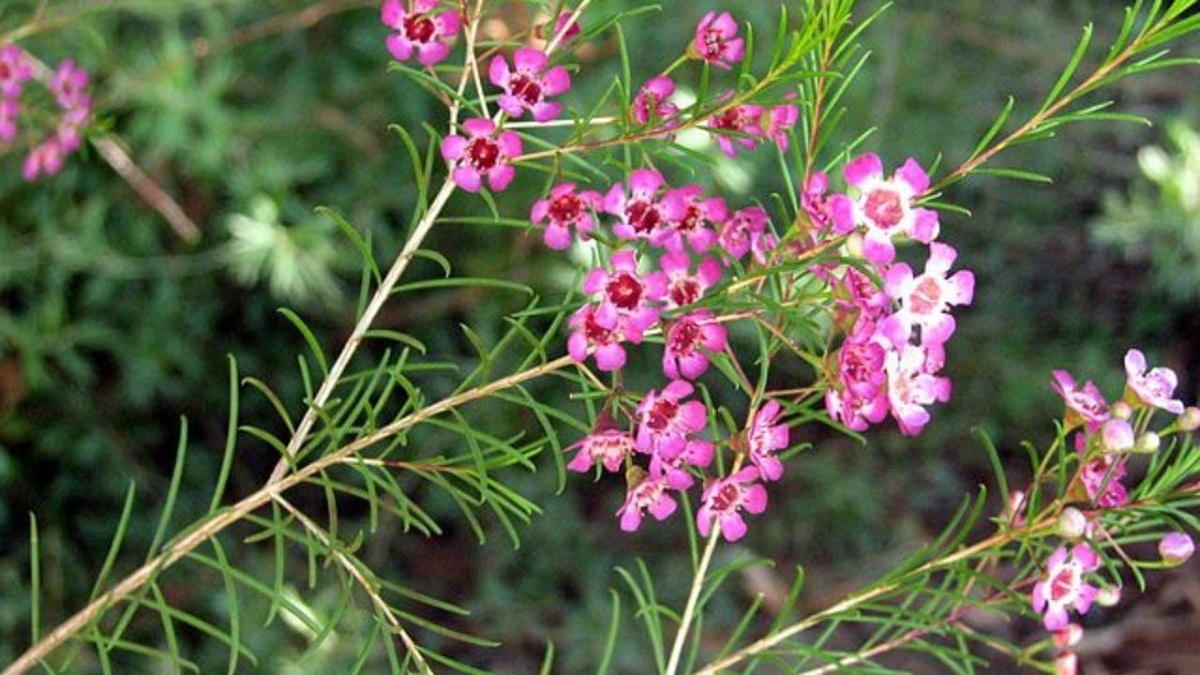
La Chamelaucium uncinatum or also known as wax flower, it is a shrub that produces quite showy flowers which belongs to the Mirtaceae family. It is a plant that comes from the western part of Australia, which has spread wildly to the other regions of Australia and commercially to the Mediterranean and North America.
The center of attention in this plant is the amount of flowers it produces, with a texture similar to wax that completely envelops it, although the leaves that have an acicular shape are also quite appreciated. This is a representative shrub in the Australian flora that is grown as a flower used for various ornaments in gardening and floristry.
Features Chamelaucium uncinatum

The flowering stage of the Chamelaucium uncinatum, part of the formation of buttons that give rise to its showy flowers consisting of five attached petals, which can be found in purple, pink, white and purple varieties.
To grow this flower it is important to know that it can be adapted to the conditions offered by a fairly dry climate, does not have many requirements regarding water, so it has the ability to withstand times of drought. Besides, it has a flowering that is quite extensive, remaining vibrant for up to 60 days, where it can withstand light frosts.
Currently there are various species of what is the genus Chamelaucium, where evidently the species can be found Chamelaucium uncinatum, being this the leader in the flower market. In many parts of Europe this belongs to the species that has the best sale, which also includes 50 varieties of different sizes and colors.
This is a long-lived shrub species that has many branches and an erect structure that can measure up to up to about 4 meters high with a crown up to 3 meters wide. Its branches are made up of rather thin woody stems, which are densely covered by leaves, all light green, with an acicular shape.
Their oppositely arranged leaves make up the branches, which once rubbed against each other give off a rather delicate citrus aroma. Similarly, its leaves have a needle-shaped ending, this characteristic being responsible for the term uncinatum.
From the last days of winter to mid-summer, the flowering season remains lush. Its process is based on a photoperiod, apart from the fact that the days that are short and the decrease in temperature can cause its flowering to occur.
Once the flowers emerge, they remain for an extended period, especially after pruning has been carried out for maintenance, these flowers are considered to be of high economic value in horticulture. Once the flowers mature, they give rise to quite small fruits that they have a bright shade of red and feature only one seed.
Habitat
This is a plant that can be found in coastal areas, on slopes, swamps, in areas with many rocks or also sandy as in the western Australian plains. In its area of origin it can be obtained in the wild, which is generally to the west of Australia and also to the southwest.
Today it is a flower that is widely cultivated in various Australian regions, starting from Perth all the way to Kalbarri, but it also has a significant presence in the United States, specifically in California.
Moreover, it is usually cultivated within the gardens of family homes as well as within commercial crops and nurseries in order to market the flowers once they have been cut.
Wax flower care
La Chamelaucium uncinatum it is quite hardy and very easy to grow in a variety of environments within the Mediterranean. Needs a lot of sunlight, a sufficiently fertile soil, with excellent drainage in addition to being sandy, since it is very vulnerable to an excessive amount of moisture in the earth.
Its cultivation is perfect for the climate of subtropical areas and the Mediterranean, since it is quite dryor, that they also withstand droughts very well as well as frosts that occasionally occur. To be used as a decorative plant, it can be grown inside a pot, in parkland, in hedge gardens, as well as for terraces or balconies.
So that its flowering is very abundant, needs a slightly warmer temperature followed by exposure to cooler weather, in which the temperature must not exceed 25 ° C.
A correctly developed Chamelaucium uncinatum plant usually produces so many branches that they tend to hang down, so they are used to make baskets used for decoration. In order for this shrub to be propagated, it is done through the seeds in the middle of spring. However, the most appropriate way for its reproduction is starting from the cuttings.
Plagues and diseases

Aphid
AphidIt is an insect that causes fairly significant direct damage to the crop. These damages occur in the most tender leaves, in the buds and also in the edges. In order to eliminate this pest, you have to resort to biological control or you have to apply insecticides that are systemic.
Botrytis
This is a species of fungus that causes the flowers to rot once they have been affected. This is an attack that usually happens in the winter and to eliminate the disease a fungicide has to be applied.
Alternaria
This fungus attacks in the autumn days, causing color changes in the leaves that can be between shades of red and orange, which can completely interrupt the growth of the plant.
As mentioned above, This is a plant that is used for decoration because of the huge amount of showy flowers that it produces. On the other hand, as it has a high production of branches, these are used for the manufacture of ornamental baskets.